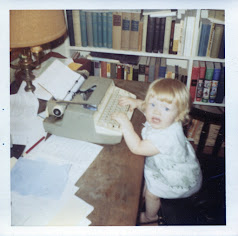Mark and Mary are my 2nd-great grandparents, father and mother of Arthur William Matthews who was born in Coleford, Somerset, England, immigrated to the United States and settled in Pittston, PA.
Searching for information about Arthur hasn't been difficult in the U.S. - except for passenger lists - because I have a lot more information about him. I have his self-proclaimed date of birth, his address, occupations, avocation, wife's full names, childrens' names and burial information and that was all passed down from my grandfather.
But searching for Arthur's parents and siblings, that is another matter all together. While Arthur left behind some good leads, he didn't give me too much to go on. He did leave this, written about 12 weeks before his death in 1915.
 |
| This is a photocopy since the original wouldn't fit in my scanner. |
Don't get me wrong, I am very grateful to have it, but it is just a good lead, not solid evidence of anything. For starters, Arthur's death certificate tells us that he died of cerebral meningitis and more than one death notice says he had been in failing health for a some time. At seventy-one years old and in questionable health, having not seen his family for fifty years, I can't assume that any of the information is correct.
And, of course, there is the common name issue. Mary. Why not Loveday or Hepzibah or even Miriam? That would certainly make things easier!
I'm really flying blind here. Parish registers, Bishop's Transcripts, indexes instead of images. Some records are indexed, some are not. And the originals are not exactly a road trip away.
I was grateful for Gail Dever's blog post this week showcasing this week's Family Search British Isles webinars. I was able to listen to Monday's (although there was no sound for the first 15 minutes) and read the handouts for Tuesday and Wednesday and I should be able to listen to today's and tomorrow's. I was also psyched to see this morning that one of the classes being streamed live and FREE from RootsTech is "My Ancestors are from Britain-What Do I Do Next?" next Friday evening (my time). Hopefully something will help me here.
Even researching names like Matthews and Smith, I have been very lucky up until now that I was very certain that records I was finding pertained to the people I was looking for. This uncertainty in searching for Matthews in England is new territory for me and I'll admit that is is a bit frustrating to feel like a beginner again. So if you have any advice, I would be eternally grateful and if you're as lost doing British research as I feel, stay tuned, hopefully we'll learn together!













